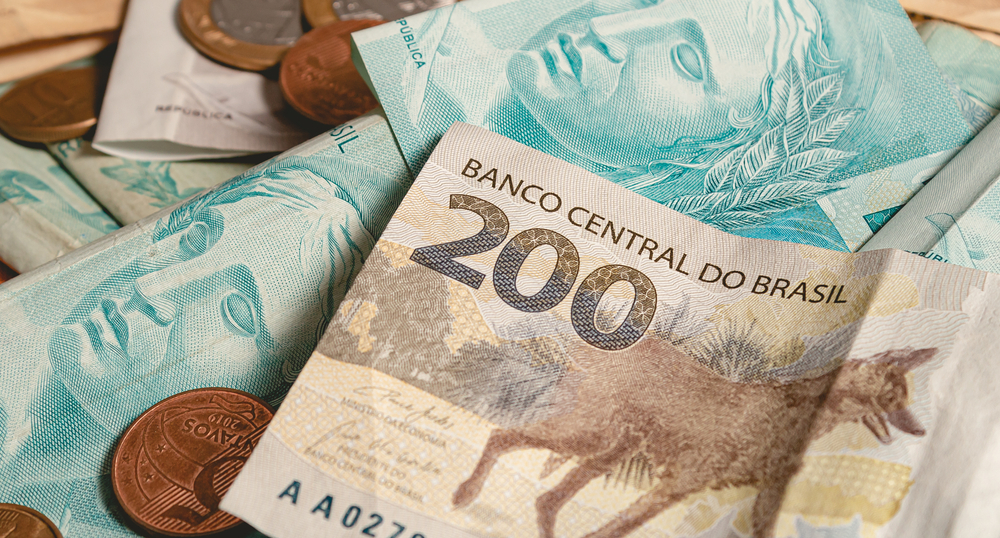By Marcus Wong and Matthew Burgess
The stars are starting to align in favor of a well-known foreign exchange strategy that benefits from attractive yields in emerging countries and low volatility – even after markets ended one of the most turbulent months in recent years.
Signs that the US economy is slowing and that global interest rates are near their peak set the stage for investors to resume so-called carry trades in emerging markets when traders fund themselves with low-return currencies in the rich world to buy those in markets that offer higher yields, which entails their appreciation.
This could strengthen currencies in countries like Brazil, where the exchange rate has again approached the psychological barrier of R$5.00 recently.
The International Monetary Fund (IMF) predicts that developing economies, particularly in Asia, will be a positive highlight despite the US slowdown.

The right ingredients for the strategy to work finally seem to return for the first time in years.
A Bloomberg indicator that tracks the borrowing of dollars and funds allocated to a basket of emerging currencies shows a return of nearly 5% this year, a rebound after three years of losses to the highest level since 2021.
Returns jumped ahead of a developed market index last month as fears of a banking crisis – started in the US – reinforced bets that the Federal Reserve is nearing the end of its monetary tightening cycle.
“Counter-intuitively, March’s wave of financial market volatility may just be the ticket to reignite emerging market carry trades,” said Eimear Daly, emerging markets strategist at NatWest Markets in London.
“Now that US carry is likely capped, investors will be tempted to return to high carry emerging market currencies.”
Interest in carry trades is back with the realization that rapid monetary policy tightening by major central banks in the developed world appears to be almost over amid growth concerns.
This has boosted confidence in the strategy despite volatility in the foreign exchange markets, which can hurt potential returns.
“Emerging market FX returns hold up well in US recessions, and carry strategies are starting to look interesting again,” Citigroup (C) strategists, including Adam Pickett, wrote in a note on Thursday (6).
“Emerging market fixed income and equities may still struggle,” so emerging market FX markets “may be a better place to hide.”
PREFERRED CURRENCIES
Several emerging market currencies are particularly attractive targets for carry trade operations, as their central banks have raised interest rates to fight inflation ahead of developed countries.
“Most emerging countries have raised rates significantly, many starting before the Fed and going higher, so a lot of emerging market yields are attractive,” said Rajeev De Mello, global macro portfolio manager at GAMA Asset Management in Geneva.
He said attractive target currencies for carry trades include those of Brazil, Mexico, India, the Czech Republic, and Poland.
In Brazil, the Central Bank began raising the Selic in March 2021 by 175 basis points to the current level of 13.75% per year.
The country’s prime rate offers a premium of 875 basis points to the Fed’s benchmark, a considerable hedge to offset any potential devaluation of the real.
Prime rates in Brazil, Mexico, Colombia, and Chile are all at 7% or higher, comfortably above current expectations of a near 5% peak in Fed interest rates based on US overnight indexed swaps.
DIVERGENT GROWTH
Emerging markets should maintain their advantage in the interest rate arena over the US if the backdrop for economic growth is considered.
US GDP is likely to slow to 1.4% this year and then to 1% in 2024, according to International Monetary Fund projections published in January.
By comparison, growth in emerging markets is expected to accelerate to 4% in 2023 and 4.2% next year, IMF figures show.
The Fund is expected to release updated forecasts this week amid signs that the global economy is starting to cool.
“Our base case is for a moderate recession in the US and a constrained dollar, which should support the emerging markets carry trade,” said Jon Harrison, managing director of emerging markets macro strategy at TS Lombard in London.
He explained that the main targets for emerging market carry trades appear to be the Brazilian real and the Mexican peso, as they will be supported by proactive central banks and relatively high real interest rates.
With information from Bloomberg

